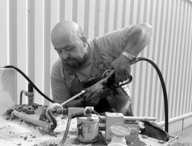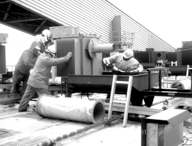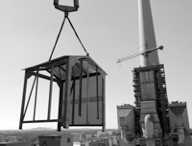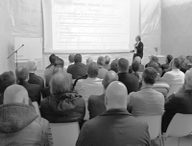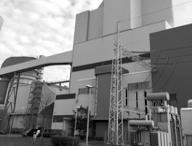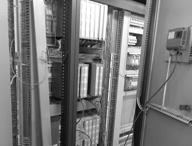High-Voltage Technology
High-Voltage Technology
High-voltage technology for electrostatic filters (ESP)
Electrostatic precipitators remove dust and aerosols from exhaust gases. They consist of housings containing electrodes and strong electrostatic fields. In the electrostatic fields, the particles are electrically charged and then deflected from the gas stream and collected on the precipitation electrodes. From there, the collected particles are removed from the electrostatic precipitator and then transported to landfills.
The collecting electrodes are designed as plates or tubes, whereby the surfaces of the electrodes can be dry or wet. The high-voltage electrodes, which form the opposite pole to the collecting electrodes, can have different shapes. In principle, they are sharp-edged so that the electrons can escape from them and charge the particles.
The strong electrostatic fields are generated by high-voltage DC power supplies with different properties:
- Systems with pronounced residual ripple (single-phase systems)
- Systems with low residual ripple (three-phase systems)
- Systems for special applications (micro pulser)
Power supplies for electrostatic precipitators consist of a transformer rectifier unit and a switch cabinet.
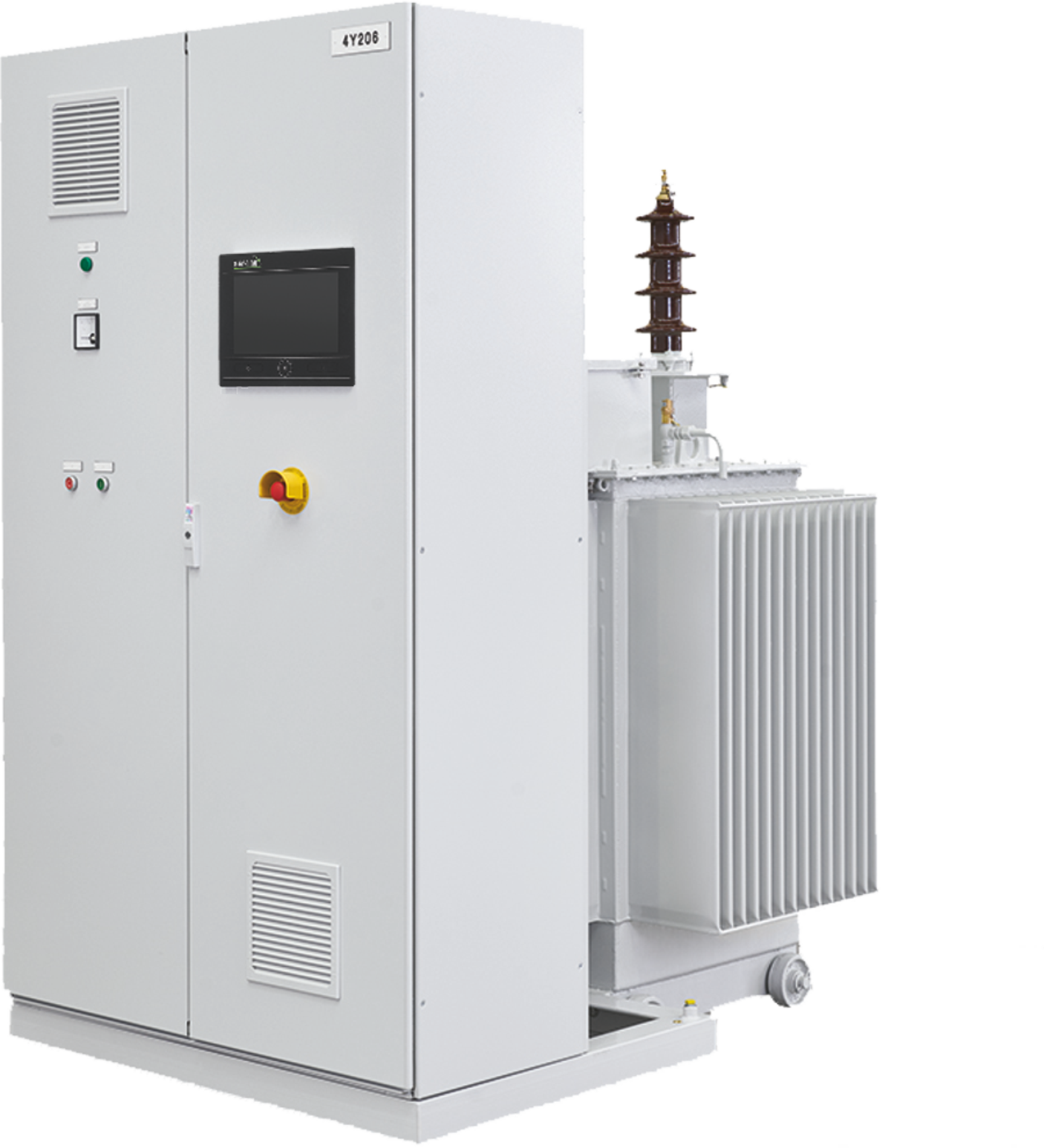
-
Transformer rectifier unit
In our transformer rectifier units, the alternating voltage fed in on the primary side is transformed to the high voltage required to operate the electrostatic precipitator and then rectified.
Transformer rectifier units are available in single-phase and three-phase versions. Essentially, the two systems differ in the performance of the electrostatic precipitator in terms of dust separation.
Here we adapt our construction to the most different worldwide input voltages (206V, 380V, 400V, ...) and input frequencies (50Hz, 60Hz, ...), as well as to the most different output voltages (36kV to 250kV), for which we design the high-voltage systems individually for each customer.
Furthermore we can adapt the main dimensions to the requirements of the respective electrostatic precipitator.
TEST US! -
High voltage regulator
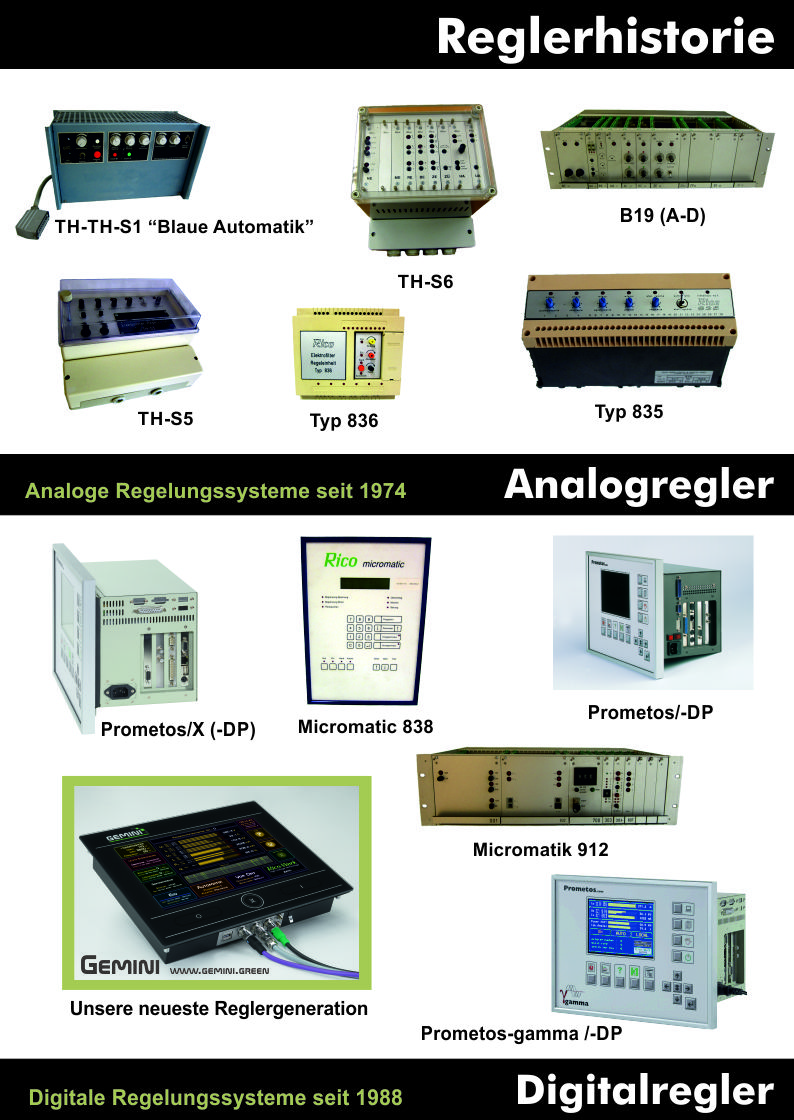
The high-voltage regulator for an electrostatic precipitator has the task of bringing the high voltage in the electrostatic precipitator as high as possible and at the same time, in the event of a breakdown, to ensure that no damage occurs and that the high voltage is available again as quickly as possible. Breakdowns are a common occurrence in an electrostatic precipitator.Rico-Werk has been developing its own electronic controllers for high-voltage sources for decades and therefore has a huge range of experience on the behaviour of various processes with regard to dust separation.
TEST US! -
The advantages of our high-voltage supply systems
- Specially developed film winding technology for better heat dissipation
- Oil cooled current limiting choke
- Oil-cooled silicon rectifier set
- High frequency choke under oil
- Interference-free filter voltage signal
- Temperature, pressure and oil level monitoring with individual components
- Measuring resistors for voltage and current
- Insulation with more than 200kV per cm dielectric strength
- Guaranteed PCB-free
- Environmentally friendly insulating liquid if required
- Low electrical losses
- High thermal reserves
- Low-noise design avoiding eddy currents
- Compact design, optimized weight
- Individual connection option to the electrostatic precipitator
- Maintenance-free operation for many years
- Energy saving (= CO2 saving) through pulsed operation possible
- Approvals for European, American and Russian markets
-
Maintenance-free operation for many years
Our maintenance-free transformer rectifier units are installed in a hermetically sealed oil boiler without gas cushions. An expansion vessel is not required, so that the insulating liquid cannot absorb any moisture from the ambient air and does not age. The volume expansion of the insulating liquid heated during operation is absorbed in the elastic steel cooling fins. Our design guarantees absolutely maintenance-free operation for many years. A maintenance-intensive cooling fan, the cleaning of filter mats, the taking of oil samples or similar is not necessary.
Every system delivered by us is extensively tested in our test field under realistic conditions with flashovers in a long-term test. Our delivery includes a complete test report and extensive documentation. So you can be sure that your plant will function trouble-free for many years.
-
CO2 reduction / energy saving through pulsed operation
Pulsed operation in the electrostatic precipitator means that the necessary high voltage is provided in the form of short pulses and that no electrical energy is introduced into the electrostatic precipitator during the pauses between the pulses. Pulsed operation means a heavy load for the high voltage sources.
High-voltage systems from Rico-Werk are suitable for permanent pulsed operation as standard. With pulsed operation, the operator can significantly reduce CO2 emissions while maintaining the same capture rate and at the same time save large amounts of energy costs.
Ask about our optimization possibilities, which we can adjust to the special conditions of your electrostatic precipitator.
Über Rico
Rico-Werk Eiserlo & Emmrich GmbH entwickelte sich seit 1969 zu einem der größten Hersteller von Hochspannungs-Gleichstromsystemen für Elektrofilter in Europa. Bisher wurden von uns über 15.000 Anlagen gebaut, die weltweit im Einsatz sind. Unsere Produkte zählen zur Spitzentechnologie in der Hochspannungsversorgung von Elektrofiltern.



